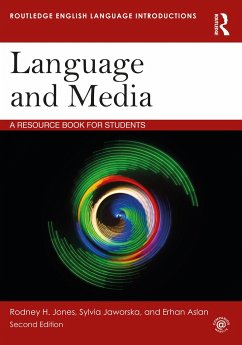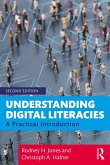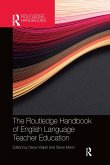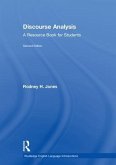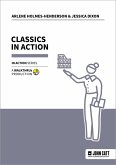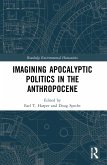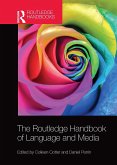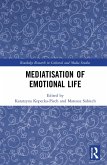Routledge English Language Introductions cover core areas of language study and are one-stop resources for students.
Assuming no prior knowledge, books in the series offer an accessible overview of the subject, with activities, study questions, sample analyses, commentaries, and key readings-all in the same volume. The innovative and flexible 'two-dimensional' structure is built around four sections-introduction, development, exploration, and extension- which offer self-contained stages for study. Each topic can also be read across these sections, enabling the reader to build gradually on the knowledge gained.
This revised second edition of Language and Media:
Provides an accessible introduction and comprehensive overview of the major approaches and methodological tools used in the study of language and media.
Focuses on a broad range of media and media content from more traditional print and broadcast media formats to more recent digital media formats.
Incorporates practical examples using real data, including newspaper articles, press releases, television shows, advertisements (print, broadcast, and digital), blogs, social media content, internet memes, culture jamming, and protest signs.
Includes key readings from leading scholars in the field, such as Jan Blommaert, Sonia Livingstone, David Machin, Martin Montgomery, Ruth Page, Ron Scollon, and Theo van Leeuwen.
Offers a wide range of activities, questions, and points for further discussion.
The book emphasises the increasingly creative ways ordinary people are engaging in media production. It also addresses a number of urgent current concerns around media and media production/reception, including fake news, clickbait, virality, and surveillance.
Features of the new edition include:
Special attention on 'new media' forms such as websites, podcasts, YouTube videos, social media sites, and mobile apps such as Snapchat and Instagram;
Additional material on: mobility and materiality in media, memes and virality, discourse processes in media production, collaborative production and user created content, reality TV, fake news, the role of algorithms and bots in media production and circulation, and media and resistance;
Discussion of media surveillance, privacy boundaries, and the so-called 'right to be forgotten' related to Internet archiving;
Brand new readings from key scholars in the field including Piia Varis, Jan Blommaert, Monika Bednarek and Martin Montgomery;
Updated examples and references throughout, to reflect more contemporary issues.
Written by three experienced teachers and authors, this accessible textbook is an essential resource for all students of English language and linguistics.
Assuming no prior knowledge, books in the series offer an accessible overview of the subject, with activities, study questions, sample analyses, commentaries, and key readings-all in the same volume. The innovative and flexible 'two-dimensional' structure is built around four sections-introduction, development, exploration, and extension- which offer self-contained stages for study. Each topic can also be read across these sections, enabling the reader to build gradually on the knowledge gained.
This revised second edition of Language and Media:
Provides an accessible introduction and comprehensive overview of the major approaches and methodological tools used in the study of language and media.
Focuses on a broad range of media and media content from more traditional print and broadcast media formats to more recent digital media formats.
Incorporates practical examples using real data, including newspaper articles, press releases, television shows, advertisements (print, broadcast, and digital), blogs, social media content, internet memes, culture jamming, and protest signs.
Includes key readings from leading scholars in the field, such as Jan Blommaert, Sonia Livingstone, David Machin, Martin Montgomery, Ruth Page, Ron Scollon, and Theo van Leeuwen.
Offers a wide range of activities, questions, and points for further discussion.
The book emphasises the increasingly creative ways ordinary people are engaging in media production. It also addresses a number of urgent current concerns around media and media production/reception, including fake news, clickbait, virality, and surveillance.
Features of the new edition include:
Special attention on 'new media' forms such as websites, podcasts, YouTube videos, social media sites, and mobile apps such as Snapchat and Instagram;
Additional material on: mobility and materiality in media, memes and virality, discourse processes in media production, collaborative production and user created content, reality TV, fake news, the role of algorithms and bots in media production and circulation, and media and resistance;
Discussion of media surveillance, privacy boundaries, and the so-called 'right to be forgotten' related to Internet archiving;
Brand new readings from key scholars in the field including Piia Varis, Jan Blommaert, Monika Bednarek and Martin Montgomery;
Updated examples and references throughout, to reflect more contemporary issues.
Written by three experienced teachers and authors, this accessible textbook is an essential resource for all students of English language and linguistics.
Language and Media is an invaluable resource for anyone interested in learning more about media discourse. It provides a clear foundation in relevant theoretical concepts, balanced with plenty of engaging examples. In addition, the sections featuring extension activities and key readings make this an ideal course textbook.
Camilla Vasquez, University of South Florida
This book is a key volume for the new media age: updating, assessing, and expanding our understanding of media and the many ways language and communication dynamics operate across a changed and changing mediascape. The authors characterize native online media features such as memes, viral spreads, surveillance capacities, and resistance; as well as resituate longstanding elements of media research such as stories, participation frameworks, production dimensions, and representation. It is definitely the go-to resource for understanding the media now.
Colleen Cotter, Queen Mary University London
Camilla Vasquez, University of South Florida
This book is a key volume for the new media age: updating, assessing, and expanding our understanding of media and the many ways language and communication dynamics operate across a changed and changing mediascape. The authors characterize native online media features such as memes, viral spreads, surveillance capacities, and resistance; as well as resituate longstanding elements of media research such as stories, participation frameworks, production dimensions, and representation. It is definitely the go-to resource for understanding the media now.
Colleen Cotter, Queen Mary University London

